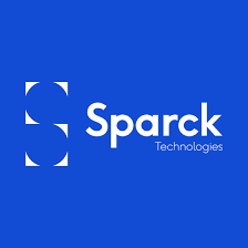Why Leading Organizations Choose Our Data Integration Consulting
Data Integration Consulting Services
Transform scattered data into strategic advantage with seamless integration solutions that connect your entire data ecosystem

Data Integration Matters Now More Than Ever
- 1
Proven Expertise Across Technologies
From legacy platforms to cutting-edge cloud solutions, our certified consultants bring hands-on experience with the full spectrum of integration technologies—including Azure Data Factory, AWS Glue, Informatica, Talend, Databricks, and more. We architect solutions that work today while positioning you for tomorrow's innovations.
- 2
Business-First Approach
Data integration isn't just about technology, it's about enabling better business outcomes. We begin every engagement by understanding your strategic objectives, then design integration solutions that directly support revenue growth, operational efficiency, customer experience, and compliance requirements.
- 3
Scalable, Future-Proof Solutions
Our integration architectures are built to scale with your business. Whether you're integrating five data sources or five hundred, our solutions accommodate growth while maintaining performance, security, and data quality standards across your entire data ecosystem.
- 4
Industry-Specific Knowledge
We understand that manufacturing data integration differs fundamentally from retail, healthcare, or financial services. Our consultants bring deep industry expertise, ensuring your integration solutions address sector-specific compliance requirements, data sensitivity, and operational workflows.
- 5
End-to-End Implementation & Support
From initial strategy through implementation, optimization, and ongoing support, we provide comprehensive services that ensure long-term success. Our collaborative approach includes knowledge transfer, empowering your teams to maintain and evolve integration solutions independently.
- 6
Data Security & Compliance by Design
Security and regulatory compliance aren't afterthoughts, they're embedded in every integration solution we deliver. We implement encryption, access controls, audit trails, and compliance frameworks (such as: GDPR, HIPAA, SOC 2) from day one, protecting your data throughout its entire lifecycle.
Our Data Integration Tools & Technology Stack
We work with the most trusted and innovative data integration platforms within the Microsoft ecosystem to deliver solutions optimized for performance, reliability, and scalability.
Microsoft Power Platform
Dataverse
Azure Data Factory
Azure Synapse Analytics
Profisee MDM
Microsoft Copilot
Fabric unites the data platform like no service has been able to do before. It harmonizes the platform from data integration to reporting, drawing data enthusiasts into a single environment.
Our customers
Customer that rely on our Data Integration & Analytics expertise
Common Data Integration Challenges & Solutions
Data integration projects face predictable challenges—from data quality issues to complex legacy systems. We've solved these problems hundreds of times, and we bring that experience to every engagement.
Disparate Data Sources Creating Silos
The Problem: Data scattered across CRM, ERP, marketing automation, IoT devices, and cloud applications prevents holistic analysis.
HSO's Solution: We design unified data architecture with centralized data warehouses or data lakes, implementing automated pipelines that seamlessly integrate all sources into a single source of truth for consistent, comprehensive analytics.
Poor Data Quality Undermining Trust
The Problem: Inconsistent data formats, duplicates, missing values, and errors compromise data reliability and analytics accuracy.
HSO's Solution: We implement comprehensive data quality frameworks with automated validation, cleansing, and enrichment processes that identify and resolve quality issues at the source, ensuring only trusted, accurate data flows through your pipelines.
Real-Time Integration Requirements
The Problem: Batch processing creates delays, preventing timely decision-making when business conditions demand instant insights.
HSO's Solution: We build streaming data architectures using event-driven integration platforms that capture, transform, and deliver data in real-time, enabling immediate visibility into operational metrics and customer behavior.
Legacy System Integration Complexity
The Problem: Outdated systems with limited APIs, proprietary formats, and technical constraints make integration difficult and expensive.
HSO's Solution: We develop custom connectors, middleware, and transformation layers that bridge legacy systems with modern platforms, preserving existing investments while enabling cloud migration and innovation.
Scalability & Performance Issues
The Problem: Growing data volumes overwhelm existing integration infrastructure, causing pipeline failures, slow processing, and missed SLAs.
HSO's Solution: We architect cloud-native integration solutions with elastic scaling, optimized for massive data volumes and parallel processing, ensuring consistent performance as your data grows exponentially.
Compliance & Data Security Risks
The Problem: Integrating sensitive data across systems creates exposure to breaches, regulatory violations, and privacy concerns.
HSO's Solution: We implement security-first integration frameworks with encryption, access controls, data masking, and audit trails, ensuring full compliance with GDPR, HIPAA, CCPA, and industry-specific regulations throughout the data pipeline.

AI-Ready Data Integration: The Foundation for Intelligent Automation
Artificial intelligence and machine learning require clean, well-structured, accessible data to deliver value. Our data integration services create the reliable data foundation that powers AI-driven insights, predictive analytics, and intelligent automation.
By establishing seamless data pipelines, implementing robust data quality controls, and building scalable data architectures, we ensure your organization can leverage generative AI, machine learning models, and advanced analytics platforms. From predictive maintenance in manufacturing to personalized customer experiences in retail, AI-ready data integration unlocks transformative possibilities across every industry.
Frequently Asked Questions
What is data integration, and why does my organization need it?
Data integration is the process of combining data from multiple sources into a unified view for analysis, reporting, and operational use. Organizations need it because data scattered across CRM, ERP, marketing, finance, and operational systems creates blind spots that hinder decision-making. Integration provides a complete picture of your business, enabling data-driven strategies, improved customer experiences, and operational efficiency.
How long does a typical data integration implementation take?
Implementation timelines range depending on the project from a few weeks to many months for enterprise-wide solutions, depending on the number of data sources, data complexity, integration approach, and desired outcomes. We begin with high-priority data sources to deliver quick wins, then expand integration scope iteratively, ensuring you see value throughout the project rather than waiting months for results.
What's the difference between ETL and ELT, and which should I use?
ETL (Extract, Transform, Load) transforms data before loading it into the target system, while ELT loads raw data first and transforms it within the destination platform. ETL works well for structured data and legacy systems, while ELT leverages modern cloud data warehouse processing power for faster performance with large datasets. We assess your data sources, volumes, transformation complexity, and platform capabilities to recommend the optimal approach for your specific requirements.
How do you ensure data quality throughout the integration process?
We implement multi-layered data quality controls including source system validation, transformation-time checks, and post-load verification. Our frameworks automatically identify duplicates, missing values, format inconsistencies, and business rule violations, flagging issues for review or applying automated corrections based on your data governance policies. We also establish data quality KPIs and ongoing monitoring to maintain high standards as data volumes grow and sources evolve.
Connect With Our Data Integration Experts
Related Resources
Learn How We're Empowering Data Integration
























